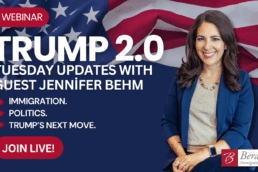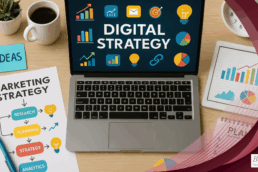In general, AI-powered hiring tools have the ability to identify patterns, make conclusions, make informed judgments, and even automate certain functions, which makes them particularly attractive to employers who are seeking to hire new employees.
Employers have been using AI powered tools for decades to scan resumes during the employee hiring process to scan resumes for keywords or phrases. Nonetheless, while AI is extremely helpful for generating ideas, it is a fast-developing tool that is grabbing the attention of legislators who have been quick to create laws and guidance to limit the use of AI tools in ways that may create discrimination, and where litigation over purported discrimination.
Examples of AI-powered hiring tools that employers currently use for recruiting and hiring efforts:
- Screeners that scan applications or resumes for keywords
- Tools that help draft or optimize job postings
- Video interviewing software that evaluates candidates based on their facial expressions and speech patterns
- Testing software that is used to assess potential job applicants’ skills, aptitude, or ability
Potential Ainti-discrimination and DEI- Related Benefits to AI
DEI → Diversity encompasses the various characteristics that make up a workforce, including gender, race, age, sexual orientation, physical ability, neurodiversity, and even traits like viewpoint or experience. Equity aims to treat all individuals fairly and impartially, striving for equal treatment regardless of identity. Inclusion focuses on creating a workplace environment where everyone feels valued, supported, and integral to the organization.
Lack of Bias:
AI-powered hiring tools, as opposed to traditional human review, are done without bias. Artificial intelligence algorithms do not have the same experiences that humans do which may cause them – consciously or unconsciously- value candidates or employees of certain identities over others. Humans have a tendency to exhibit unconscious bias towards certain groups of individuals who they feel are similar to themselves. AI employment tools are a method to reduce any bias – both positive and negative – towards applicants.
Efficiency & Reach of AI-Powered Hiring Tools:
Another positive aspect of the new AI Hiring Era is that AI tools can help employers accomplish reading resumes and applicants’ data in a shorter period of time, which inturn allows employers to review a large number of applications. While a traditional recruiter may cease to review resumes after a certain amount of time, or a certain number of applicants, an AI program would be able to review the entire group of applicants – including those which would have otherwise been excluded. This raises the potential for a more diverse workforce as the entirety of the applicants would be reviewed – rather than a small number for timing purposes.
Potential Discrimination and DEI-Related Risks to AI
Discrimination: Two Different Types
- Disparate Treatment → Intentional discrimination against one individual because of their membership in a class protected by law
- Disparate Impact → When a facially neutral policy or practice (including a selection procedure) unduly disadvantages individuals based on their membership in a protected class.
The second category of discrimination, Disparate Impact, is the type of discrimination that AI creates a trap for as employers use the tools as part of their hiring practices.
Bias in Data
AI systems are only as effective as the data they’re trained on, and when that data is biased or unrepresentative, the results can perpetuate and even amplify those biases. Many existing datasets reflect historical inequities, underrepresentation of diverse groups, or systemic biases, and when AI-powered tools rely on such data, they risk reinforcing these patterns. For example, an AI tool designed to evaluate job candidates against “successful” employees might unintentionally filter out diverse applicants if the current workforce lacks diversity. Similarly, facial recognition or speech analysis systems trained on data overrepresenting certain groups—such as white people, men, or those without disabilities—often deliver less accurate results for others, including people of color, women, or individuals with disabilities. This becomes especially troubling when such tools are used in automated processes, like video interview screenings, where biased algorithms could reject hundreds of candidates before they ever reach a human decision-maker.
Bias in AI Programming
AI systems are only as good as the people who create them, and bias can also stem from programming errors or the unconscious biases of developers. For instance, a resume screening tool programmed to reject candidates with employment gaps might unintentionally exclude individuals who took time off for medical reasons, disabilities, or childbirth. Similarly, an algorithm prioritizing certain zip codes in recruitment could inadvertently favor non diverse neighborhoods, reinforcing existing inequities. These well-intentioned but flawed design choices highlight the importance of mindful programming to avoid unintentional discrimination.
Balancing AI Efficiency with Privacy and Oversight
AI systems rely on vast datasets to make decisions, but relying on too much or the wrong type of data can raise serious privacy and ethical concerns. Sensitive information like medical histories, employee leave records, or salary details may not be appropriate for AI-driven decision-making and should be carefully handled to avoid breaches of confidentiality. Moreover, the reliability of AI outcomes depends on both the quality of the data and the soundness of its programming. Mistakes or biases in these tools can result in unfair outcomes, such as overlooking strong candidates due to rigid algorithms or software glitches. Incorporating human oversight into AI processes helps ensure fairness, transparency, and accountability, striking a balance between innovation and ethical responsibility in the workplace.
Navigating AI’s Impact on Workforce Dynamics
The increasing use of AI in the workplace presents challenges for workplace culture and diversity. Monitoring tools, even when lawful, can make employees feel overly scrutinized, fostering an environment of mistrust that undermines efforts to build an inclusive and supportive culture. Additionally, automation often replaces routine tasks, disproportionately affecting roles historically dominated by women, such as administrative positions, while increasing demand for STEM skills, where women and minorities remain underrepresented. These trends risk widening income gaps and reducing workforce diversity. Employers can counteract these effects by investing in employee development through upskilling, cross-training, and recruiting from diverse talent pools to ensure AI adoption supports, rather than hinders, a fair and equitable workplace.
Adopt and Use AI Thoughtfully
- Integrate Human Oversight → Ensure AI decisions are reviewed by people, especially for declined candidates, to catch errors or accommodate specific needs. This is essential to prevent litigation if AI inappropriately discriminates against a candidate.
- Monitor for Bias and Fairness → Regularly audit AI tools for potential biases affecting underrepresented groups. Use third-party or vendor testing to ensure fairness and equitable outcomes.
- Protect Data and Train Users → Safeguard sensitive information during audits and limit access to need-to-know individuals. Train managers and staff on proper AI use, anti-discrimination laws, and recognizing accommodation requests.
Berardi Immigration Law is dedicated to staying ahead of the curve in a rapidly changing legal landscape, offering guidance and support to businesses navigating complex workforce challenges, including those presented by AI-driven hiring tools. With extensive expertise in business immigration and a deep commitment to compliance, Berardi helps employers adopt innovative solutions while ensuring fairness, equity, and adherence to employment laws. Contact Berardi Immigration Law to learn how they can support your organization’s hiring practices and workforce strategies.
Disclaimer: This blog is for informational purposes only and does not constitute legal advice. For specific guidance related to your situation, please consult a qualified attorney. Berardi Immigration Law is here to assist with your legal needs.
Related Posts
December 10, 2025
Webinar: “Trump 2.0: Tuesday Updates With Guest Jennifer Behm”
December 10, 2025
Success Story: Event Management and Marketing Firm’s E-2 Visa
Ready to have Berardi on your side?
Whether you’re a business looking to hire or a professional hoping to relocate, immigration law can be complicated. But you don’t have to do it alone. Put our experience to work for you.



